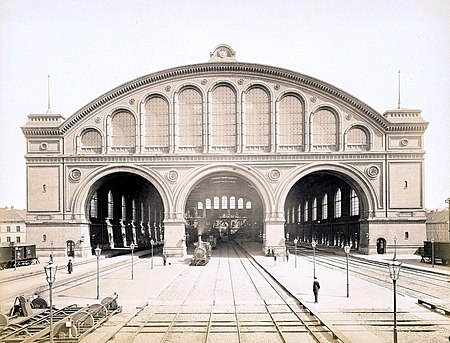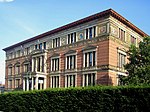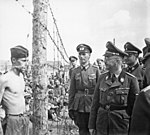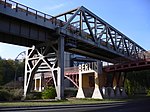Berlin Anhalter Bahnhof
1952 disestablishments in GermanyBerlin S-Bahn stationsBuildings and structures demolished in 1960Buildings and structures in Berlin destroyed during World War IIBuildings and structures in Friedrichshain-Kreuzberg ... and 6 more
Demolished buildings and structures in BerlinHistory of BerlinRailway stations closed in 1952Railway stations in Germany opened in 1841Railway stations located underground in BerlinRuins in Berlin

The Anhalter Bahnhof is a former railway terminus in Berlin, Germany, approximately 600 m (2,000 ft) southeast of Potsdamer Platz. Once one of Berlin's most important railway stations, it was severely damaged in World War II, and finally closed for traffic in 1952, when the GDR-owned Deutsche Reichsbahn rerouted all railway traffic between Berlin and places in the GDR avoiding the West Berlin area. The station's name lives on in the Berlin S-Bahn station of the same name, opened in October 1939 as part of the North-South S-Bahn link.
Excerpt from the Wikipedia article Berlin Anhalter Bahnhof (License: CC BY-SA 3.0, Authors, Images).Berlin Anhalter Bahnhof
Askanischer Platz, Berlin Kreuzberg
Geographical coordinates (GPS) Address Nearby Places Show on map
Geographical coordinates (GPS)
| Latitude | Longitude |
|---|---|
| N 52.503055555556 ° | E 13.381944444444 ° |
Address
Lilli-Hennoch Sportplatz
Askanischer Platz 6
10963 Berlin, Kreuzberg
Germany
Open on Google Maps









